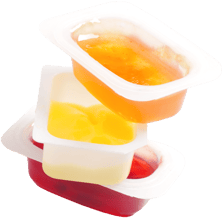 Did you know that roughly one third of the food produced in the world for human consumption every year – which amounts to approximately 1.3 billion tons – is lost or wasted? In the United States alone it is estimated that Americas are throwing out the equivalent of $165 billion each year. While this is a staggering waste of money, it also means, according to the NRDC paper, “Wasted: How America Is Losing Up to 40 Percent of Its Food from Farm to Fork to Landfill,” that all of this uneaten food ends up rotting in landfills, contributing to the single largest component of US municipal solid waste.
Did you know that roughly one third of the food produced in the world for human consumption every year – which amounts to approximately 1.3 billion tons – is lost or wasted? In the United States alone it is estimated that Americas are throwing out the equivalent of $165 billion each year. While this is a staggering waste of money, it also means, according to the NRDC paper, “Wasted: How America Is Losing Up to 40 Percent of Its Food from Farm to Fork to Landfill,” that all of this uneaten food ends up rotting in landfills, contributing to the single largest component of US municipal solid waste.
As a result, preservation methods and techniques coupled with barrier material structures that help preserve our food products in a safe and healthy manner for extended shelf-life can not only help to ensure the quality and safety of the product, but have further impact on the effort to cut down on food waste and spoilage. One example of a food packaging and processing method used to extend the shelf-life of food products is hot-fill processing. Continue reading to learn more about hot-fill packaging.
Food spoilage can occur for many reasons, but a primary cause is the growth of microbes such as bacteria, yeast and mold that feed and grow on the food product causing it to go bad. Extending product shelf life through a combination of packaging material sterilization process and customized barrier structures that maintain the integrity of the container and subsequently the food product.
How Hot-Fill Packaging & Processing Works:
Hot-fill is a packaging and processing technique in which heat is used to sterilize the food product and subsequently the inner surface of the container during the filling process. It is a technique that is used extensively in the food packaging industry for a variety of applications ranging from applesauce to dips and sauces. The hot-fill process starts by initially heating the food product up to a temperature between 194-204°F as a method of killing bacteria and microorganisms present in the food. The product is then cooled slightly to around 179-185°F (application dependent), filled into containers, and sealed immediately. The sealed container is then cooled for approximately 2-3 minutes as it exits the filling line and transitions to a cooling stage to reduce the inner core temperature of the food product prior to being packaged for shipment.
The main purpose of utilizing the hot fill packaging process as a method of sterilization and food packaging is to provide a product free of bacteria and microorganisms that can multiply at ambient temperature. The result is a “commercially sterile product” with an extended shelf-life that can be achieved in excess of 6-12 months (application and barrier dependent).
Examples of market applications that use the hot-fill process include:
Compatible Materials for Hot-Fill Packaging & Processing:
In addition to the hot-fill process, choosing a material structure that provides a combination of oxygen and moisture barriers also helps to extend the shelf life and reduce food spoilage and waste. When developing the rollstock structure for barrier packaging applications, factors including food product, part design, processing conditions, distribution environment and retail conditions must all be considered as each variable ultimately affects shelf-life performance. Once these variables have been defined, further details such as barrier specifications, shelf-life expectations, part geometry, material attributes and part handling must all be considered to refine the design of the thermoformed part and develop a rollstock structure that will deliver optimal barrier performance.
In addition, with increasing industry pressures on sustainability, ICPG provides material solutions for hot-fill packaged products using traditional substrates such as polypropylene and polystyrene with enhanced performance and protection capabilities for direct food contact and extended shelf-life requirements. Concerns for material replacement under Proposition 65 as well as sustainability and recyclability can be address through the development of a fully recyclable polypropylene material structure using performance capabilities.
ICPG offers various material solutions compatible with hot-fill processing including custom multi-layer coextruded barrier rollstock PP/EVOH/PP or PS/EVOH/PE structures for shelf-stable products, or a monolayer PP for short shelf-life and refrigerated products.
However, for hot-fill FFS processes, our XPP™ Polypropylene Solutions offers the best compatibility with the system as a whole to meet all the needs and demands of both product and process. In addition, XPP solutions offer three levels of barrier protection that can be customized based on product specifications and desired shelf life:
- Enhanced Barrier: XPP enhanced barrier offers inherent improvement to OTR & MVTR barrier protection without the use of specialty barrier materials, additives or coatings.
- High Barrier: Customized multi-layer coextrusion with EVOH for high barrier & extended shelf-life applications.
- ICPG's Reimagined Barrier: XPP with ICPG's patent-pending Reimagined Barrier Technology (RE-BA) offers a functional replacement for EVOH and PVDC in the form of a fully-recyclable barrier structure.
Interested in learning more about how you can enhance the performance and sustainability of your hot-fill packaged products? Download our XPP Enhanced Barrier Polypropylene product sheet:




